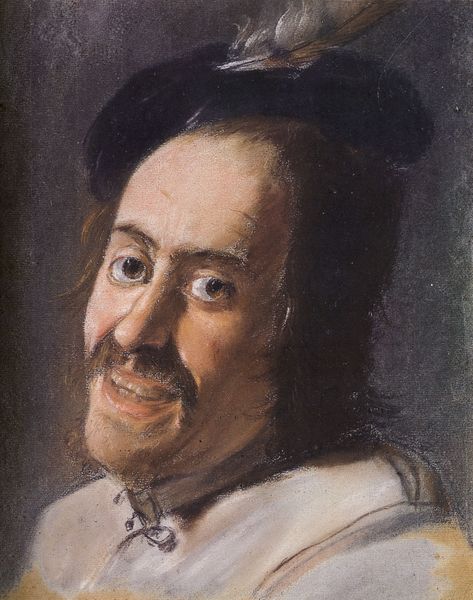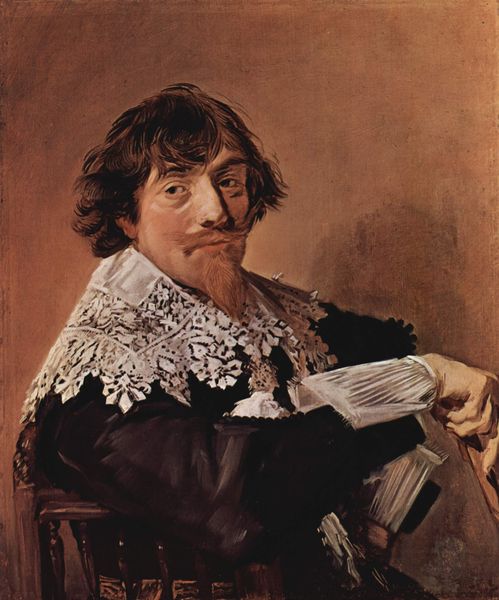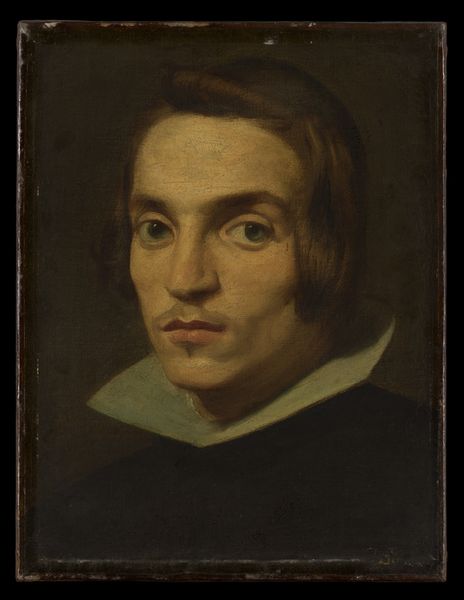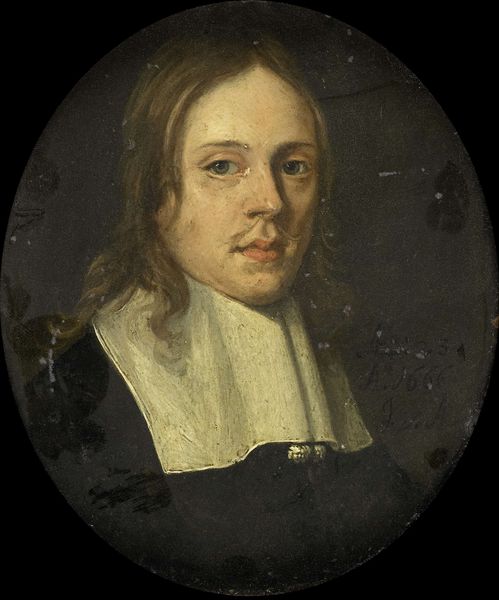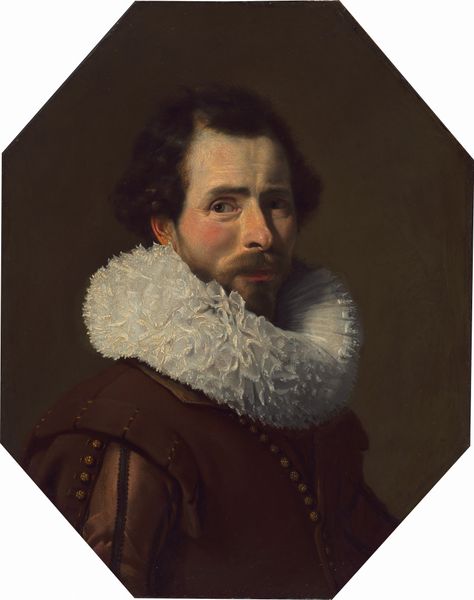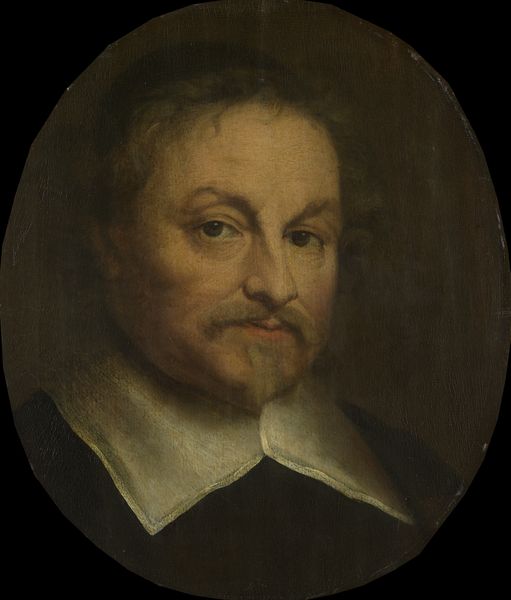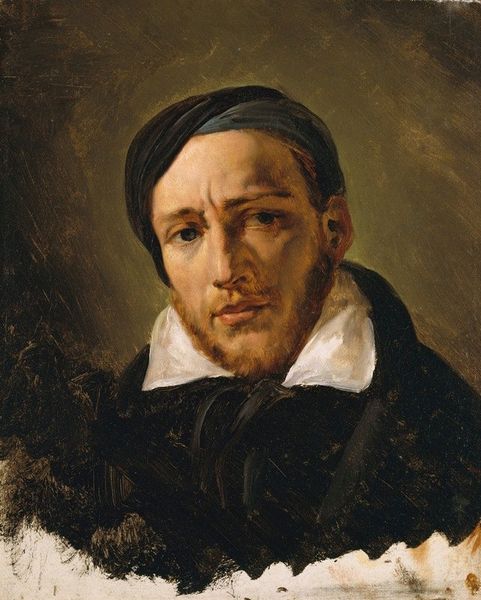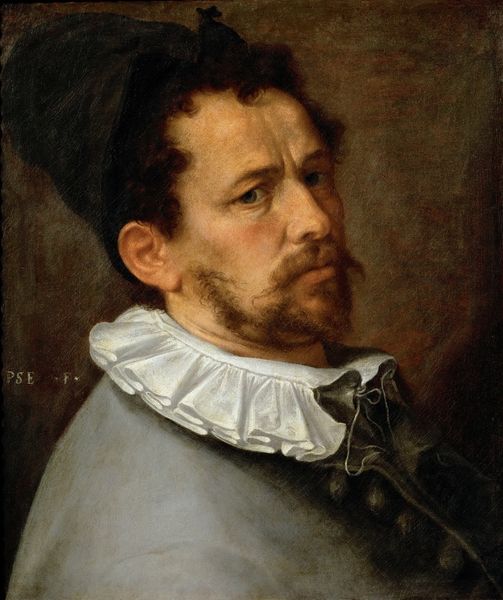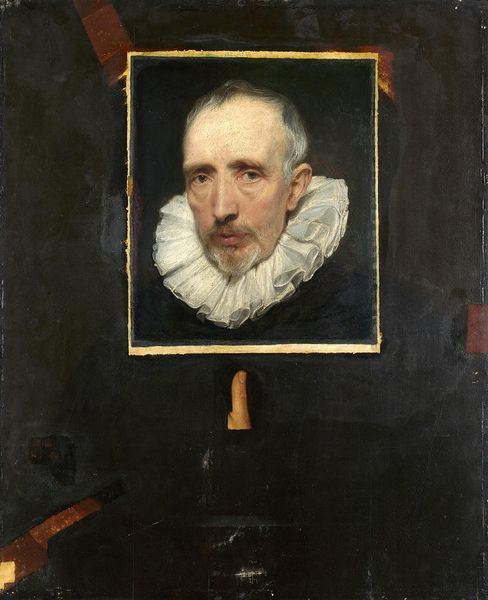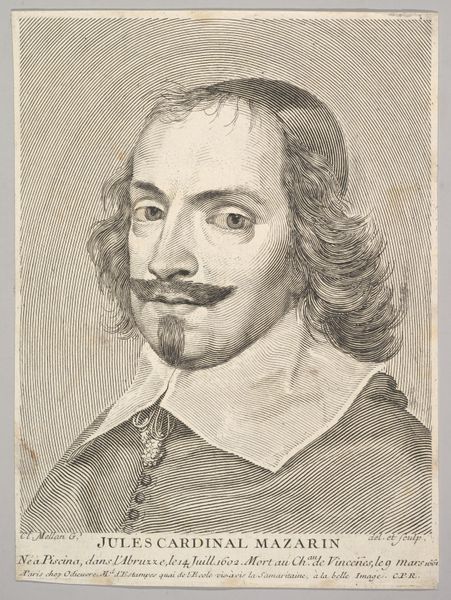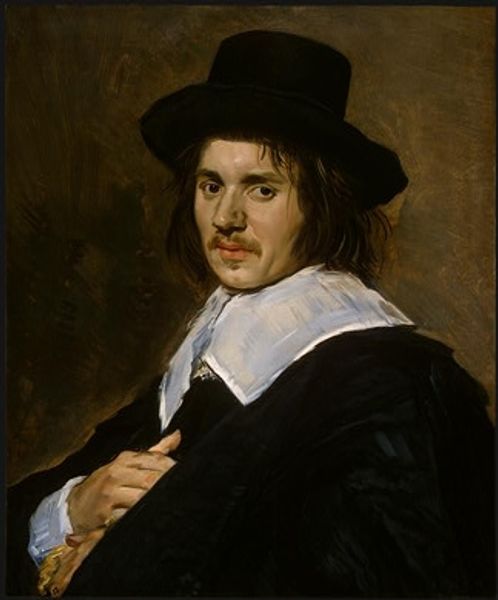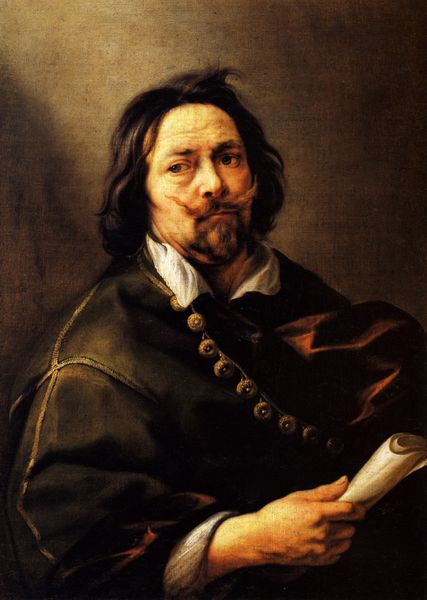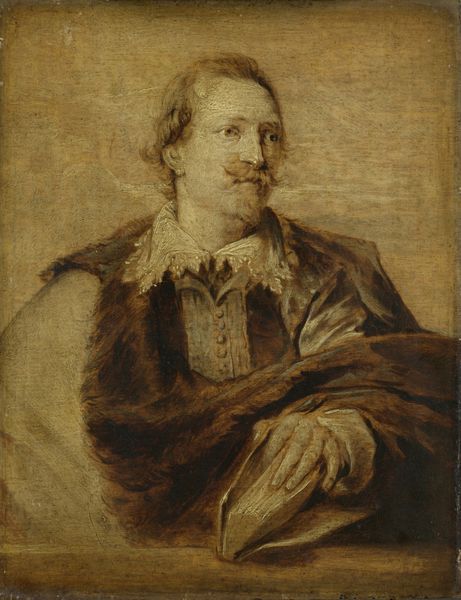
oil-paint
#
self-portrait
#
baroque
#
portrait
#
oil-paint
#
history-painting
Copyright: Public domain
Editor: Here we have Giulio Cesare Procaccini's "Self Portrait," painted around 1600 using oil paint. The piece is striking; there's a definite confidence in his gaze. What story do you think this portrait tells? Curator: It’s fascinating how Procaccini chooses to represent himself, isn't it? Think about the power dynamics at play in 17th-century portraiture. The very act of painting oneself was a statement, particularly for someone perhaps seeking greater recognition. Who gets to be remembered, and why? How does this painting position Procaccini in the art world of his time? Editor: That’s a great point, it’s almost like he’s asserting his place in history. And I notice he included his tools; the palette and brush. Curator: Exactly! These are not mere props. They're symbols of his craft, his intellectual property, if you will. Consider the socio-economic status implied by these tools. Artistry was evolving, and artists were striving for a new type of recognition, to be elevated beyond simple artisans. It challenges the rigid social hierarchy, suggesting art as a form of intellectual labor. Editor: So, it’s not just a likeness; it's a carefully constructed declaration. What do you make of his expression? Curator: The subtle smirk and direct gaze are particularly intriguing when contextualized within a patriarchal society. He's not just showing himself, he's challenging the established norms. He knows his worth. What does that say about art education then? Editor: That's a new way to read a "self-portrait"! It encourages us to challenge power dynamics of the day. Curator: Absolutely, art isn’t created in a vacuum. Considering its historical and social context makes this piece so much more resonant.
Comments
Join the conversation
Join millions of artists and users on Artera today and experience the ultimate creative platform.
